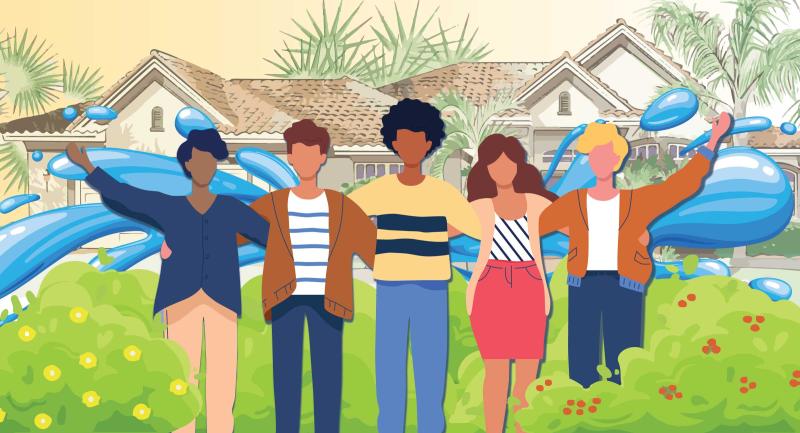Part of being a water superhero means fighting off the villains that threaten our water resources. That includes invasive plants that creep in and take over natural water habitats.
What Makes a Plant Invasive?
Invasive plants are non-native species that have been brought to Florida from around the world. Some non-native plants are harmless, but others can reproduce and spread rapidly, pushing out native plants and wildlife. When non-native plants cause harm to the natural environment or begin to affect human health, they are considered invasive.
How Do Invasive Plants Get to Florida?
Most invasive plants are brought to Florida by the people who live and work here. Without knowing whether or not the plants will be harmful, we import many different species from all over the world that we think may be useful or that we think are pretty and want to add to our landscapes.
Some of the new plant species may die off because they cannot adapt to Florida’s environment. Others may survive and grow but stay right where we put them without causing any problems. But some new plants love it here — they go to seed and start to spread. From the farms or yards where they were first planted, they spread and spread and spread, invading new territory and taking over places where native plants aren’t used to competing with them.
How Can You Help Fight Back?
Florida spends millions of dollars trying to get rid of invasive plants, and you can help! Here are a few ways to get started:
-
Fight invasives right at home. Start by identifying the plants in your yard or around your building complex — are any of them invasive? If you find something invasive, talk with your parents about safely removing the plants.
- Volunteer to fight invasives in your community. There are many local organizations that fight back against invasives. They gather people together to uproot, cut and sometimes spray invasive plants. If you’d like to help out, ask your parents or teachers about volunteering.
But be careful — you don’t want to kill native or harmless plants. And many invasive plants will fight back with chemicals to make you itch or cough. Ask for help from someone who knows what they’re doing.
Florida’s Most Wanted
Be on the lookout for these leafy villains who have invaded yards and natural areas all over Florida.
Brazilian pepper
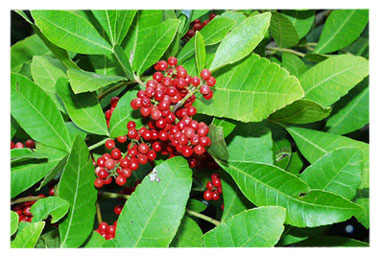
This spicy-sounding bush from South America arrived back in the 1800s because people thought it looked pretty. The green leaves and bright red berries reminded Floridians of Christmas holly bushes. Instead of a nice Christmas present, Florida was in for a nasty surprise. Brazilian pepper is now considered one of the most invasive species in the state. It grows next to water and crowds out mangroves and other native plants but doesn’t provide the same high-quality habitat. Beware: getting rid of it is difficult, and for some people — itchy!
Melaleuca trees
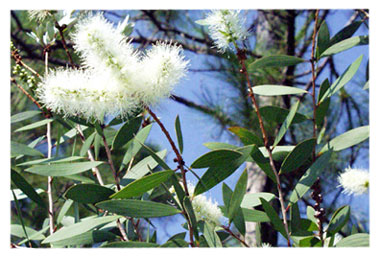
These troublemakers form gangs and chase everybody else out of town, growing in groves so dense nothing else can live with them. Sometimes called “paperbark tea trees,” melaleuca trees like water but they can live in dry or wet areas. They grow to about 80 feet tall and draw the water from the soil. They don’t like the cold so they’re more of a problem in southern Florida, where they have gobbled up hundreds of thousands of acres in the Everglades.
Australian pine (Casuarina spp.)
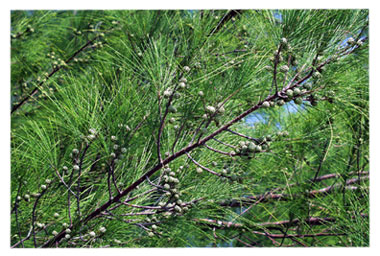
These trees (which disguise themselves as pines but aren’t) were brought to Florida to work. People planted them for lumber, to stabilize beaches and for shade. Bad idea — now they chase away other beach plants with chemical warfare. When things get windy, instead of stabilizing the beach, they blow over. This can mess up nesting sites for sea turtles and gopher tortoises.
Skunk vine
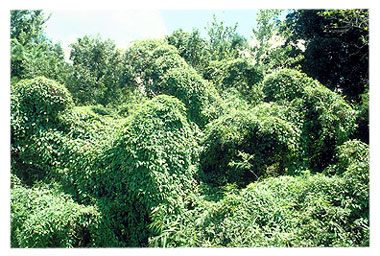
This stinker grows in forests, can live in the water and even high up in trees. It was introduced from Asia in 1897 and really does smell skunky.
Cogon grass
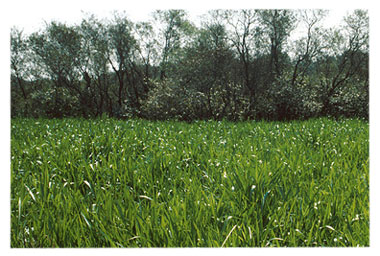
This sharp, hairy character is considered one of the world’s worst weeds. It first invaded the U.S. as packing material in an orange crate. It was also planted in Florida in case cows might want to eat it. They didn’t much like it and now it invades our fields and roadsides.
Hydrilla
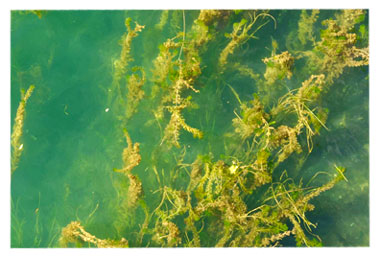
Hydrilla is a rooted, submerged plant native to Southeast Asia. It was brought to Florida during the late 1950s as an aquarium plant. It is a rapidly growing plant that can fill lakes and rivers from the bottom to the surface with a tangled mass of stringy stems. Special adaptations allow hydrilla to grow in much deeper and darker water than other aquatic plant species. Because of this special ability, the growth of hydrilla is not limited to shallow shoreline areas of lakes.
Old World Climbing Fern
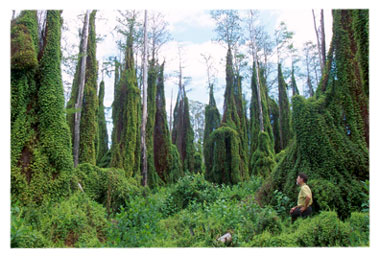
Old World climbing fern is a native vine to Africa, Asia and Australia and was first found in south Florida in the late 1950s. Thick mats of this vine can cover and eventually kill trees, shrubs and plants, harming wildlife habitats. This vine is also flammable and can carry fire into wetland and swamp areas that normally help contain controlled burns and wildfires.

